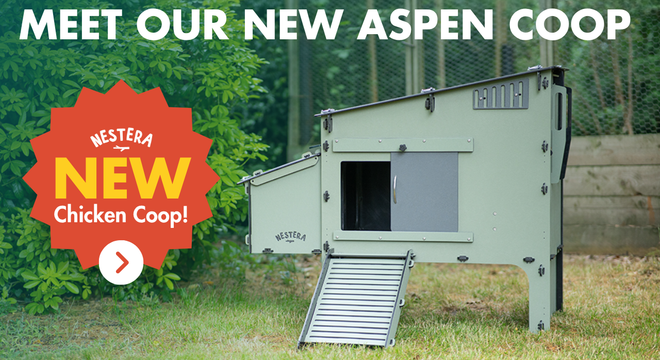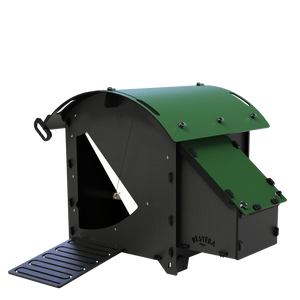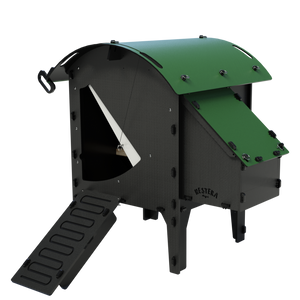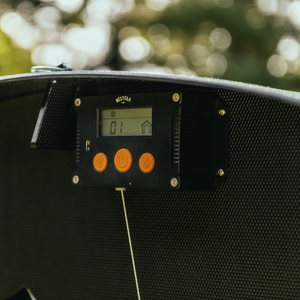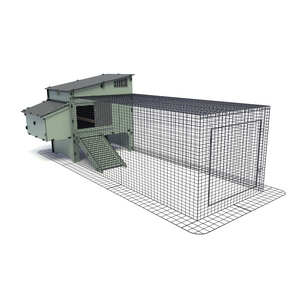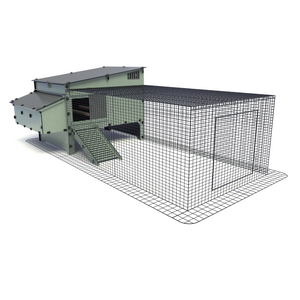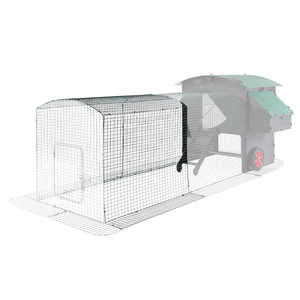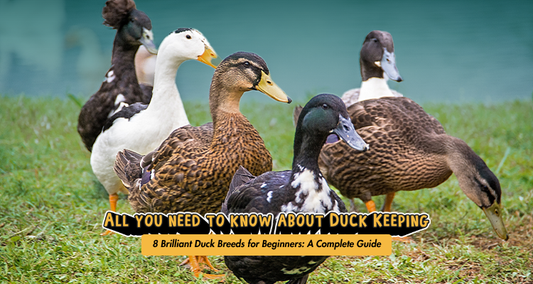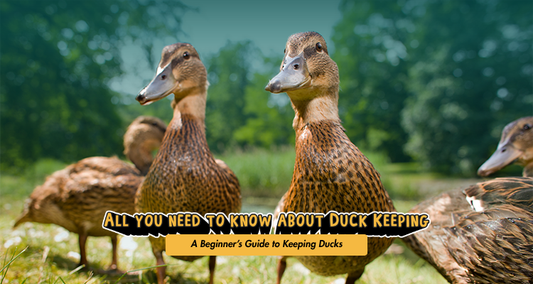Chickens are very social animals that live in flocks made up of one or more males and many more females.
Pecking Order
Chickens establish the flock dynamic through pecking behaviours known as the 'pecking order'. In a newly formed flock, the oldest male will usually be the head of the flock but in backyard chicken flocks it will usually be the largest and most dominant hen.

The pecking order works exactly as you might assume. The head bird pecks the next one in line who in turn pecks the one below her. Often the birds at the bottom of the pecking order will be pecked by everybody above them.
In real life, the chain of command is created through social interactions like pecking, chasing, sounds, and protecting resources.
Flock Hierarchy
The hierarchy among chickens decides their rank in the group and affects how they eat, mate, and get resources.
Dominant birds typically have priority access to food, preferred roosting spots and mates. Lower-ranking chickens submit to the authority of dominant individuals. They may display submissive behaviours such as avoiding direct eye contact, moving away from dominant birds or crouching when approached.
You may have noticed your sexually mature hens doing this when you approach as they also see you as dominant.
Once established, the pecking order tends to remain relatively stable, although it can shift due to factors such as chickens leaving or joining the flock.
After the death or removal of a bird, all those ranked below him or her, get ‘promoted’ and move up a rank.
If bullying is happening, the bully can be separated from the rest of the group for a few days. A dog crate with food and water can be ideal for this as a short-term measure.
When she returns, the dynamic will have altered and often she will be less aggressive. This is why it is important to add several new birds at once and never just one. Supplying extra temporary feeders and drinkers can also mitigate resource guarding by more established birds.
If pecking draws blood, the victim should always be removed and treated immediately. Chickens are naturally omnivorous and their inner dinosaur comes to the fore when they see and smell blood!
Interestingly if only one bird from the original flock remains, she will always be head of the new flock as she is the resident bird, even if she’s the smallest!
Although the system may seem brutal to us, it is totally natural amongst chickens and should not be humanised. It’s best not to interfere but keep a watchful eye. Providing hiding places and applying anti-pecking spray for new birds can be useful.
After a few days, most flocks settle. Given that it always upsets the flock dynamic when you add or remove birds, it is much better to add several birds at the same time than a few over serval weeks or months.
Some people like to keep new and old birds separate and introduce them through a mesh fence whereas others prefer to just put them all together from the beginning. There is no perfect approach but adding new birds to the coop at night is usually considered to be a good approach. Make sure both flocks are in good health before you mix them though.
Perching in the Chicken Coop
Where individuals perch or roost at night reinforces their status within the group. Higher-ranking birds will perch higher up.
This makes them harder to reach by ground-based predators. Lower ranking birds will perch below them with the lowest ranking at the bottom. That's what makes The Wagon the perfect coop as it has a three-tiered perch system for up to 8 large chickens or 15 bantams. Each of the three perches can be easily removed for any non-perching birds in the flock.
There is a belief that this is where the phrase ‘getting **** on from a great height!’ came from. You can imagine the scenario! The behaviour of birds roosting simultaneously and sitting side- by-side, helps to strengthen their social bonds. This is an example of flock synchronicity.
Stressed birds are much more likely to peck one another and this ‘injurious pecking’ has little to do with flock dynamics. Insufficient space and opportunities to exhibit natural behaviours are the primary cause.
Injurious pecking in large domestic or commercial flocks is rife and is caused by several factors:
- huge numbers of birds with no social hierarchy as a result
- insufficient space and enrichment opportunities causing stress
- rearing under an artificial light when they were chicks. This is due to a lack of flock synchronicity where bored and over tired chicks, peck one another. Natural brooding with a hen or heat plates helps prevent this!
- the breed itself! The genetics that cause high productivity are also linked to higher aggression, particularly in hens that lay brown eggs.
